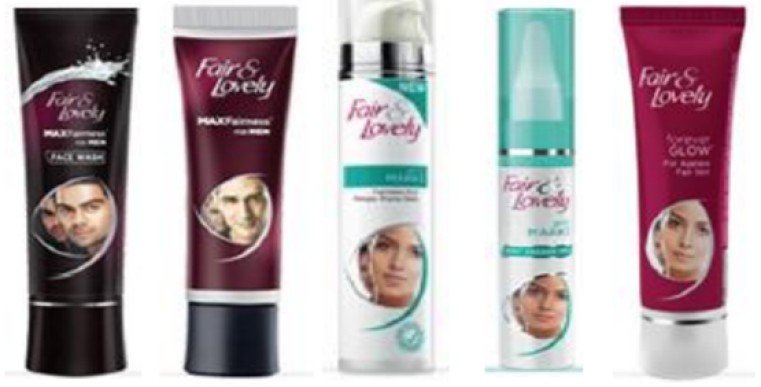Assessing genuine use and distinctive character of a registered trademark in Singapore
30 November 2021

Revocation under Singapore law for non-use
The Singapore trademark law provides for two ways through which a party may seek to challenge a third party’s mark that has already been registered, namely: revocation and invalidation.
In relation to revocation, Section 22(1) of the Trade Marks Act provides for four grounds of revocation. Two of these grounds relate to non-use, namely Sections 22(1)(a) and 22(1)(b) of the act. These provisions state that in order for an applicant to succeed in an action for revocation, the mark must either not have been put to genuine use in the course of trade within the period of five years following the date of completion of the registration procedure, or such use was suspended for an uninterrupted period of five years respectively. Further, these provisions also require that there are no proper reasons for the said non-use.
The case for non-use is more complicated where the proprietor (or a third party with the proprietor’s consent) uses the relevant marks in the relevant 5-year period, but does so using a different form of the registered mark. In such a case, the legal test to be satisfied is whether such use of a mark different from the registered mark can amount to “genuine use”. If “genuine use” is found, the registered mark cannot be revoked for non-use.
Technopharma Limited v. Unilever PLC: The registered trademarks
In Technopharma Limited v. Unilever PLC [2021] SGIPOS 11, Unilever PLC (the proprietor) had registered the following trademarks in Class 3:



Preliminary conclusions by the IP adjudicator
Technopharma Limited (the applicant) applied for the revocation of the subject marks on the grounds of non-use under Sections 22(1)(a) and (b) of the Trade Marks Act. The IP adjudicator who presided over the oral hearing reached the following conclusions:
- First, the word mark should be fully revoked as it had not been used in relation to any of the categories of goods listed in its specification. The word mark was registered in Class 3 for “Perfumery; essential oils; deodorants and antiperspirants; shaving preparations; pre-shave and aftershave preparations; depilatory preparations; cotton wool, cotton sticks”. However, the word mark was used on product packaging for face creams and face washes instead, which was found by the IP adjudicator to not fall within any of the goods indicated in the specification.
The IP adjudicator also rejected the proprietor’s argument that facial creams and washes are functional substitutes for shaving, pre-shave and after-shave preparations. He found that there was no evidence for such use of the creams and washes for shaving-related purposes.
- Second, the logo mark and series mark should be partially revoked to the extent that there is no evidence of their use in Singapore beyond the specific types of skincare products that appeared on third party websites and online sales channels. In particular, the IP adjudicator found that there was no evidence of use of the logo mark on soaps, cosmetics or non-medicated toilet preparations, or the use of the series mark on depilatory preparations, cosmetics, make-up and make-up removing preparations or petroleum jelly as claimed in the specification of the logo mark and series mark, respectively.
- Third, the logo mark and series mark were not revoked to the extent that the use of the marks on the product packaging images constituted “use in a form differing in elements which do not alter the distinctive character of the mark in the form in which it was registered”, as provided in Section 22(2) of the Trade Marks Act.
Alteration of distinctive character: Application of the Pattisier three-stage test
The third issue on the distinctive character of the mark formed the bulk of the grounds of decision.
In this respect, the IP adjudicator’s findings hinged on an in-depth analysis of the concept of the “distinctive character” of the subject marks. The decision set out a comprehensive and useful analysis of the relevant case law and a summary of the applicable principles for comparing the forms in which a mark has been registered and used. In particular, the principles from The Patissier LLP v. Aalst Chocolate Pte Ltd [2019] SGIPOS 6 (The Patissier) were applied in the instant case as follows:
- Identification of distinctive character of the registered forms of the trademarks: The IP adjudicator identified two visually distinctive components in both the series mark and logo mark, namely the words “Fair & Lovely” and the pictorial elements. He identified the distinctive character of each of the two marks as lying in the combination of these two visual components.
In identifying the visual components for each mark, the adjudicator noted the particular font of the words in each mark as well as features such as, inter alia, the oversized ampersand (“&”), exaggerated serifs of the text and the dual-head motif in the series mark as well as the line drawing of side profile of two female faces in the logo mark.
Identification of the forms of actual use:The adjudicator also identified the forms of the marks as actually used on the product packaging, taking into account the words as well as the pictorial images, descriptive words and other design elements.
- Comparison: The IP adjudicator then proceeded to the second stage of the assessment, where he compared the registered and used forms of the mark and found the differences in the form as used, including additions, deletions, and adjustments. For example, as compared to the series mark, the product packaging images appeared to partition the two visually distinctive components (the words, “Fair & Lovely” and the photographs of the two females (the dual-head concept referred to in No. 1 above), as shown below. Unlike the series mark, not only are the faces in the product packaging image cropped, in some of the product packaging, they also include two male faces with no smile.

- Evaluation: After comparing the forms of the mark as used and registered, the IP adjudicator proceeded to evaluate the impact of the differences between the forms. Although the marks had some visual similarities, the IP adjudicator reached the conclusion that the differences are significant enough to disqualify the product packaging images as legal equivalents of the subject marks as registered.
Importantly, the adjudicator stated that the permissible margin for variation between the registered and used forms of a trademark is narrow. While de minimis changes would be acceptable, other changes which result in any alteration of the distinctive character of the registered trade mark is enough to render the used form a non-equivalent of the registered form. The changes do not have to result in a significant or substantial alteration of the distinctive character of the used form of the mark to be rendered a non-equivalent of the registered form.
Consent
There was also a consideration of the issue of consent as Section 22(1) provides that the mark must have been put to genuine use, either by the registered proprietor or a third party with the proprietor’s consent. The IP adjudicator set out the following principles in relation to consent:
- A third party’s use of a registered trademark occurs with the registered proprietor’s consent if the latter expressly consented to such use.
- The registered proprietor must prove that it had actual knowledge of the third party’s acts of use of the mark, that occurred with the proprietor’s consent.
- Apart from actual knowledge, the proprietor must demonstrate that it had taken positive steps that objectively indicate it has authorised or assented to the third party’s use.
- Consent can also be found in situations where the registered proprietor becomes aware of the third party’s use of the mark and demonstrates its assent or approval of the use by some form of encouragement, support or endorsement.
The issue of consent was relevant in this case because the IP adjudicator, for the purposes of comparing registered and used forms of the mark, considered the product packaging images from only a particular retailer’s website for the used form of the mark, as there was no evidence of consent in respect of the other retailer.
Conclusion
The IP adjudicator found that the proprietor has not been able to prove the genuine use of any of the subject marks and that the application for revocation for non-use succeeded.
The key takeaway for trademark proprietors is that they should attempt to use their marks in the same way as they are registered so as to protect their trademarks from revocation for non-use.
Even if certain visual similarities between the registered and used forms remain, the registrar or IP adjudicator may still find that the distinctive character of the mark had been altered. In this regard, registered proprietors of trademarks will do well to remember that the alteration does not have to be significant or substantial for the registry to decide that there was no genuine use of the registered mark.









